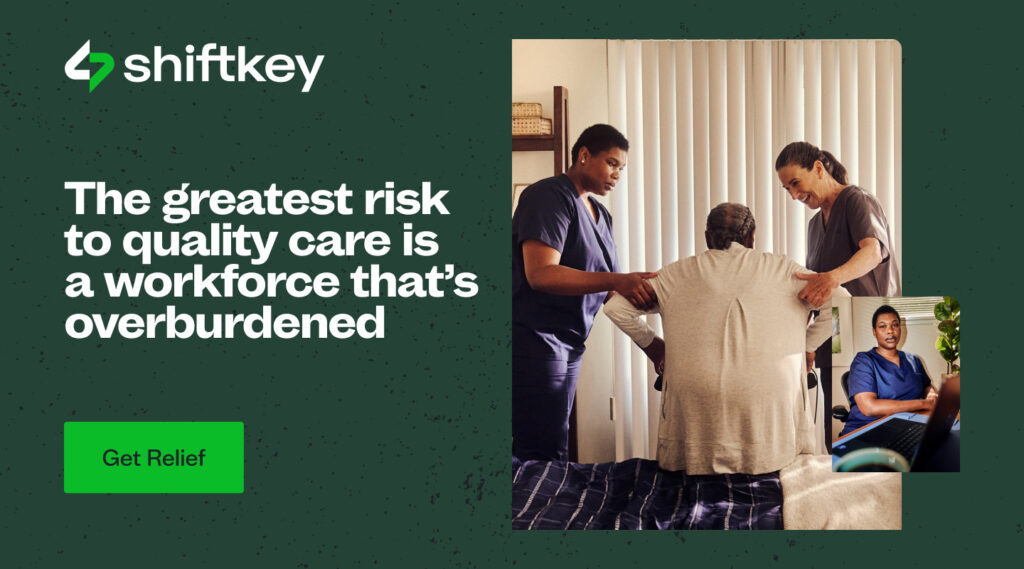
As a former operator and industry veteran of over 15 years, I relate to the concerns and considerations of you, my former industry colleagues, examining alternative workforce structures. I also know that those concerns and considerations have been heavily influenced by concerted efforts to detract from models that truly empower the worker, and provide facilities with the data and insights to stabilize, scale, and care for more people.
And, as someone who sincerely empathizes with your perpetual anxiety and sleepless nights over how to stay afloat with enough workers to provide quality care for the people who need it, I want to affirm the power of a workforce strategy I am convinced we cannot do without: The independent licensed professional.
I’ve spent many hours speaking with technology visionaries, workforce strategists, and policy experts on this topic – so I can say with confidence that it’s not only a promising and viable strategy, but also a necessary one.
The policy POV
My colleague, Regan Parker, is one of the leading experts in alternative workforce policy and strategies in the country, with a background in worker classification law. These laws are complicated, nuanced, and were written long before alternative models were ever considered. As she shared in an article earlier this year:
“Some industry leaders have conjectured or claimed that a platform with the 1099 model can ‘absolve themselves’ of responsibility and leave healthcare communities with the liability for an independent worker. That’s not possible in this area of the law – there are clear and enforceable compliance structures that protect the professional, the care community and the platform. If a company has misclassified a worker, there are a number of ways for an agency or a platform to be held accountable.“
Unfortunately, there are bad actors in the space who may try to take advantage of workers or facilities who understandably don’t specialize in this area of workforce law – that’s true to an extent in any model. That’s why it’s important to seek out partners who are known for operating with integrity, have dedicated legal expertise in-house, and can show the results for both facilities and providers impacting their quality of operation and life.
The quality care POV
I’ve also heard facilities raise the concern that independent contractors may be less capable of, or committed to, providing quality care. ShiftKey was developed through the lens of leaders who worked in the credentialed care space for the better part of their careers – which is why the technology was specifically built to vet and house credentials. This isn’t like a traditional ‘gig’ app that just anyone can sign up for – there’s a thorough process for verifying credentials and the platform offers features that allow facilities to flag if they’ve encountered issues with a specific provider.
I’d also argue that the greatest risk to quality care is a workforce that’s understaffed, overstretched and overscheduled. There already aren’t enough licensed professionals to meet the growing demand in the post-acute and long-term care space – we must find creative ways to find as many professionals as possible who have invested the time and resources to earn the proper credentials. We can’t afford to have people sitting on the bench, and for some professionals the only way they’re willing to get back in the game is through the true independence that a platform like ShiftKey offers.
The total workforce POV
We’re also combatting decades of negative experiences with staffing agencies. When facilities hear about platforms like ShiftKey, the same assumptions may unconsciously come to mind. But one thing our leaders have been clear about from the beginning is that we are not a staffing agency. Our model is built on data and transparency – equipping facilities with the insights to make long-term strategic workforce decisions at scale, while providing access to the largest marketplace for independent licensed professionals to meet facilities’ everchanging, unique needs.
Most recently, ShiftKey introduced its Schedule Automation Marketplace Integration (SAMI) to facilities, with immediate and transformative results, including: 83% reduction in unfilled shifts, dropping from an average of 15% unfilled to just 3%. At the same time, this reduction yielded business returns, instead of coming at a premium cost, with facility partners reporting results that included a 7% increase in resident occupancy rate and more than $1 million in cost savings.
We need 3.5 million additional long-term care healthcare workers by 2030 (Institute of Medicine) and, in the meantime, 61% of long-term care facilities are limiting admissions because of staffing shortages (American Healthcare Association). My former colleagues and peers in the industry are all too familiar with these numbers, but I share them again in this context to emphasize that the needs in long-term and post-acute care are not overblown and true. Transformative solutions must be developed and embraced to make an impact. It’s critical that we partner together – the technology and data companies, workforce strategists, facilities and their employees, and independent licensed professionals – to empower a workforce to support our parents, grandparents and other loved ones with attentive, quality care.
Brandon Tappan is the Chief Revenue Officer for ShiftKey, a leading technology company transforming the future of work.




